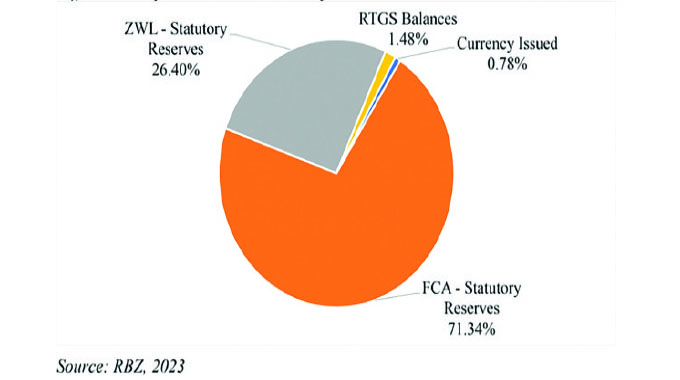Livestock industry: Beacon of food production

The livestock industry, viewed as a beacon of national food production, has increased meat, egg and milk production during the first nine months of 2018. Record growth was achieved in the country’s largest meat industry — broiler production — while the egg industry is rebounding from last year’s outbreak of Avian Influenza (AI).
This production momentum and market demand may not be sustained into 2019 as projected by the latest Livestock Zimbabwe Market Update, citing foreign currency shortages, increased costs of production and high regulatory costs of doing business undermining global competitiveness of the domestic livestock production sector.
The business pressures on production costs along the livestock value chains are being compounded by the high level of inflation experienced in 2018 which continued to erode consumer purchasing power. Low income families consider meat and eggs as luxury goods, consumption of which declines with falling disposable real income, compromising the nutritional security and development of children under the age of five years.
In a country targeting to restore food self-sufficiency as an integral component of its national food security strategy, the livestock industry has striven to rebuild the animal protein base for self-sufficiency over the last decade. Zimbabwe, now proudly self-sufficient in meat and eggs since 2012, is set to achieve self-sufficiency in dairy production by 2022 on the strength of public policy support for private sector investments into the dairy industry. Similar policy incentives are also needed to attract private sector investments into domestic fish production by utilising existing inland water bodies for aquaculture. Zimbabwe normally imports about $18 million worth of fish annually — including fresh water fish and kapenta.
While production of meat, milk and eggs continued to increase during the third quarter of this year, the cost of production has also increased markedly. The latest quarterly market update shows that while the cost of most raw ingredients required for stockfeed manufacture increased by an average 15 percent since the second quarter, the price of stockfeed did not increase. However, other production costs have escalated, including transport, imported ingredients like soyabean meal, additives, vitamins and molasses and veterinary supplies, which are all adding to the compound cost of the end protein product for the consumer.
All livestock sub-sectors recorded production increases for the first nine months of 2018 over the same period last year, with the exception of table egg production. Table egg production, which suffered a 24 percent decline between June and August of 2017 triggered by the AI outbreak, experienced a 33 percent growth in 2018. Private investments into the poultry layer breeder industry continues to spur growth in national egg production towards pre-AI levels. After plummeting to 2,5 million dozen eggs per month in February 2018, egg production has rebounded to 3,3 million dozen table eggs in September 2018. Chicken, Zimbabwe’s largest meat industry, achieved record production growth in the third quarter of this year, with broiler meat production topping 12 000t per month. Broiler day-old chick production reached an unprecedented 66,8 million chicks during the first nine months of 2018. This is 38 percent higher than during the same period in 2017 and 18 percent higher than during 2016. The breeder industry is also gearing up to supply rural poultry production, which remains largely untapped in Zimbabwe.
The 6,3 percent increase in beef slaughters for the nine months to September over the same period last year, is not only a reflection of massive restocking in recent years, but also a reflection of recovery from the drought in the two years prior to 2017. Mashonaland West (36 405) and Masvingo (36 388) recorded the highest number of slaughters in the first nine months of 2018.
However, the beef industry is still suffering from regulatory and disease pressures. Regulatory costs of compliance (taxes, duties and other regulatory costs levied on the livestock producer) are highest in the cattle industry, amounting to around $100 per beast slaughtered. Foot and Mouth Disease has spread to areas in the northern parts of the country leading to limited off-take from parts of the Mashonaland provinces. Theileriosis has also caused high death rates of animals across the country putting pressure on future supplies of marketable beef.
The current inflationary market is encouraging producers in the predominantly small-scale beef sector to retain cattle for their asset value and only converting them into cash when required.
National milk production has increased by 12 percent to 54,4 million litres, compared with January to September last year.
Milk production has increased year on year by an average of 10 percent since 2014 spurred by private investment in the national dairy herd. The Dairy Industry Revitalisation Fund, capitalised through a statutory levy on imported milk products since 2016, continues to finance the inclusive development of the local dairy industry. National pig production recovered over the first nine months of the year to 2016 levels and pork production reached 124 600 pig slaughters over the first nine months of the year, up by 6 percent on 2017.
The formal goat meat supply chain registered an 11 percent growth in supply to reach 7 058 slaughters amidst persistent shortages of goat meat in the formal market. Strong growth in livestock meat production stimulated the stockfeed industry to grow by 41 percent in 2018.
Monthly feed production rose to 48 912t over the first nine months of 2018 from 34 586t in 2017. On average, the feed industry utilises 21 000t of maize from the Grain Marketing Board and poultry feeds account for 63 percent of the monthly tonnage and 72 percent of monthly sales value of feeds produced.
The outlook for 2019 in the livestock and meat industry remains very positive. The sector noted some very positive policy announcements in the 2019 Budget Statement and among other provisions, welcomes the retention of import quotas on milk powder; suspension of duty on fertilised eggs imported from non-Sadc countries as the country rebuilds poultry breeder flocks; and exemption of the export surcharge on hides to allow export of excess stocks.







Comments